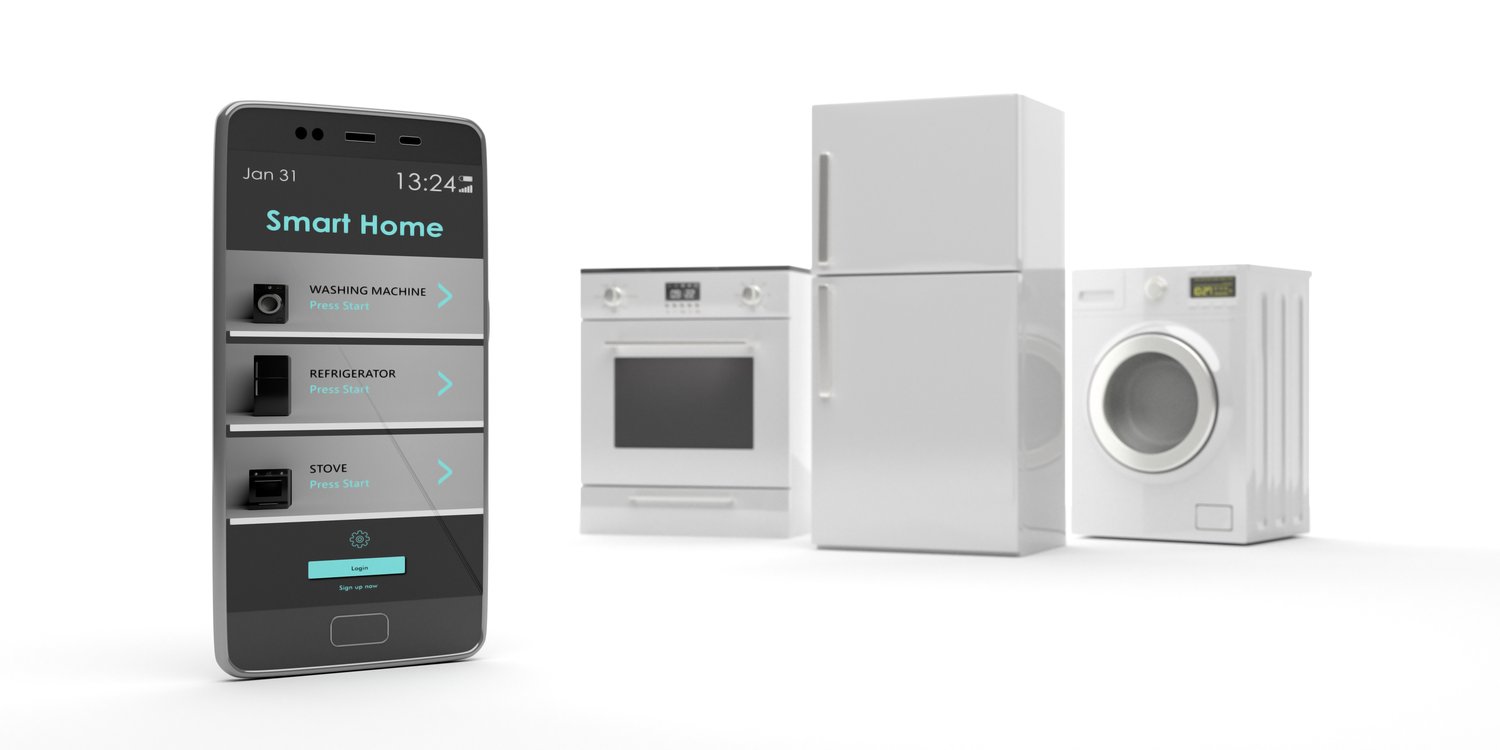The seamless operation of smart appliances is crucial for any modern home’s functionality and efficiency. Yet, network disconnections can turn this convenience into frustration. Understanding the root causes of these disconnections in relation to WiFi and various protocols is essential for maintaining a smoothly running smart home. Dive into the intricacies of these issues and explore effective strategies to keep your devices connected at all times.
- Uncover the common causes of network disconnections in your smart appliances and how different protocols influence these issues.
- Equip yourself with practical troubleshooting techniques to address connectivity problems in both WiFi and alternative protocol contexts.
- Learn about innovative WiFi connectivity solutions designed to improve the stability and performance of your smart appliances.
- Explore alternative protocols like Zigbee and Z-Wave for more reliable connections between your smart devices.
By addressing these connectivity challenges, you can optimize the efficiency and reliability of your smart home. Explore how both WiFi enhancements and alternative protocols can lead to a seamless and connected living environment, ensuring your smart appliances perform at their best.
Understanding Smart Appliance Network Disconnections in WiFi and Protocol Contexts
Smart appliances have become a staple in modern homes, offering convenience and control at the touch of a button. However, these devices are only as effective as their network connectivity. One of the most common hurdles users face is overcoming the issue of network disconnections.
The primary cause of network disconnections in smart appliances is often related to WiFi signal fluctuations or interference from other electronic devices. Obstacles such as walls and furniture can also degrade the signal, leading to unreliable connectivity. Existing WiFi networks might be overloaded with data traffic from multiple connected devices, causing interruptions.
Understanding different communication protocols can also offer insights into connectivity challenges. While WiFi is the predominant protocol due to its ease of use and widespread availability, other protocols like Zigbee and Z-Wave are gaining traction. These alternative options often provide more stable connections in densely populated networks, utilizing lower bandwidth and reducing interference.
Each protocol comes with its own set of benefits and limitations. WiFi, while universal, may not always be the most reliable for all types of smart appliances due to congestion and range limitations. Subsequently, choosing the right protocol is crucial for optimal device performance and achieving a seamless smart home experience.
Troubleshooting Network Disconnection Issues
Troubleshooting network disconnection issues in smart appliances is paramount to maintaining a functional smart home. Begin by assessing your current network setup. First, check the signal strength of your WiFi connection. A weak signal might be the culprit behind frequent disconnections. Consider relocating your router to a more central location for improved coverage.
Conduct a survey of the home environment for devices or appliances that may cause interference. Microwave ovens, cordless phones, and baby monitors often operate on the same frequency as WiFi, contributing to network disruptions. Adjusting the frequency band or channel may alleviate these issues.
If WiFi instability persists, it might be beneficial to remote the device closer to the router for direct analysis. Alternatively, rebooting both the router and the smart appliance can sometimes resolve minor connectivity issues by refreshing the network settings.
For those using alternative protocols like Zigbee or Z-Wave, ensure the devices are within range of the hub and are adequately powered. Unlike WiFi, these protocols often rely on mesh networking, so positioning additional repeaters or devices within range can strengthen the network and minimize disconnections.
WiFi Connectivity Solutions for Smart Appliance Stability
Maintaining a stable WiFi connection is crucial for the seamless operation of smart appliances. A common issue faced by homeowners is intermittent connectivity, which affects the performance and dependability of their smart devices.
Firstly, ensure your router is placed in a central location within your home. This placement minimizes obstacles and enhances signal distribution, reducing dead zones that can disrupt communication between your router and smart appliances.
Consider upgrading to a dual-band or tri-band router. These routers offer additional channels that can alleviate congestion and significantly improve the speed and reliability of your wireless network. This approach is particularly beneficial in homes with multiple devices connected simultaneously.
Implementing WiFi extenders can boost signals in areas of your home where the primary router’s range falls short. These devices expand the coverage of your network, ensuring smart appliances remain consistently connected, regardless of their location.
Regularly updating your router’s firmware is another effective solution. Firmware updates often include bug fixes and enhancements, which could improve compatibility with smart devices and overall network performance.
For more persistent issues, consider segmenting your network using guest networks or IoT-specific channels. This approach prioritizes bandwidth for smart devices, reducing interference from other connected devices and optimizing performance.
Protocol Alternatives to WiFi for Reliable Connections
While WiFi is ubiquitous, it may not always provide the most reliable connection for smart appliances, especially in larger homes or those with network congestion issues. Exploring protocol alternatives can offer more stable and efficient connectivity solutions.
Zigbee is one such protocol designed specifically for smart home devices. Its lower power consumption and ability to connect multiple devices simultaneously make it ideal for smart appliances. Zigbee networks create a mesh system, allowing devices to communicate with each other and pass data through multiple paths if a direct connection to the hub is unavailable.
Z-Wave is another popular alternative offering dependable connectivity for smart devices. Like Zigbee, it employs a mesh network topology, enhancing coverage and ensuring that signals are not easily obstructed by physical barriers in your home. Z-Wave operates on a different frequency than WiFi, which eliminates interference and provides a more stable connection for smart appliances.
Additionally, consider emerging protocols such as Thread. Thread is designed for connected products in the home, providing low-latency communication and robust security features. Its IPv6-based architecture means it is scalable and future-proof, supporting new smart appliances as they are developed.
Investing in hubs that support multiple protocols can lead to more flexible and reliable smart home setups. These multi-protocol hubs integrate Zigbee, Z-Wave, and even Bluetooth into a single, cohesive environment, maximizing connectivity and ensuring reliability for a wide range of smart appliances.
Optimizing Network Solutions with Emerging Technologies
Smart home systems continue to evolve, and staying informed about the latest advancements in technology is crucial for minimizing network issues and maximizing efficiency. As more households embrace smart appliances, ensuring reliable connectivity becomes paramount. Emerging technologies provide innovative solutions to enhance network performance and overcome common connectivity challenges in smart homes.
One such advancement is the deployment of Mesh WiFi systems. Unlike traditional routers, mesh networks use multiple nodes to cover the entire home in a seamless web of connectivity, reducing dead zones and ensuring stable internet access across all smart devices. This method not only improves signal strength but also allows for a more uniform distribution of bandwidth, accommodating the requirements of numerous smart appliances simultaneously.
Additionally, the incorporation of 5G technology into residential networks promises to revolutionize how smart appliances interact with each other and the internet. The significantly faster speeds and reduced latency offered by 5G enable real-time data exchange, which is particularly beneficial for high-demand operations like smart security systems and home automation setups.
Furthermore, AI-driven network optimization is another frontier transforming smart home connectivity. By analyzing network traffic patterns, artificial intelligence can predict congestion and reroute data to maintain the smooth functioning of all connected devices. This technology ensures that each appliance receives the necessary bandwidth when needed, efficiently managing resources across the network.
Emerging technologies also focus on enhanced security measures. Innovations like blockchain technology are being explored to create decentralized networks, offering robust protection against intrusions and unauthorized access. This ensures that all data transferred within your smart home ecosystem remains secure and private.
Incorporating these technological advancements into your smart home setup can significantly improve network stability and appliance performance. By embracing Mesh WiFi systems, leveraging 5G connectivity, adopting AI-driven optimizations, and ensuring strong security protocols, you can prepare your smart home for future challenges and enjoy a seamless, efficient experience.
Frequently Asked Questions about Smart Appliance Network Connections
What causes network disconnections in smart appliances?
Disconnections are often due to interference, outdated firmware, or weak WiFi signals.
How can I improve WiFi stability for my smart devices?
Ensure your router is centrally located and consider upgrading to a dual-band model for better coverage.
What are alternative protocols to WiFi?
Zigbee and Z-Wave are popular alternatives that offer more reliable connections for smart appliances.
Are there specific steps to troubleshoot connectivity issues?
- Restart your router and devices.
- Check for firmware updates.
- Reduce interference from other electronics.
What’s the benefit of using emerging technologies for network stability?
Emerging technologies enhance signal strength and provide more robust connectivity, leading to fewer disconnections.





